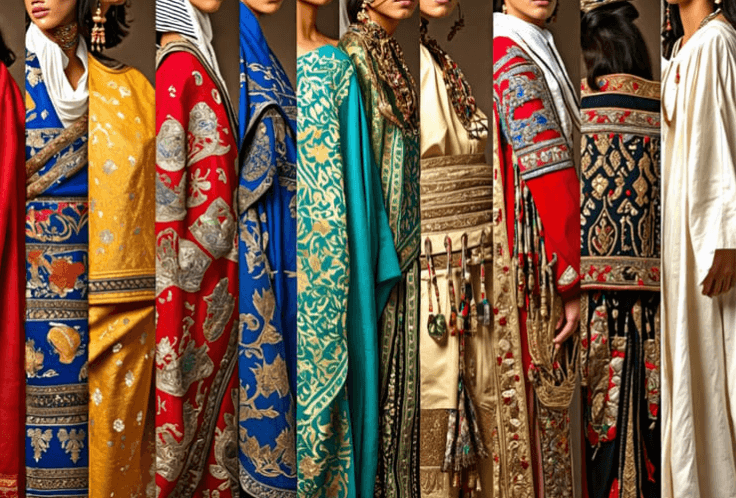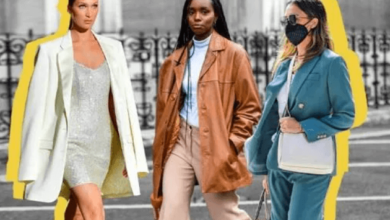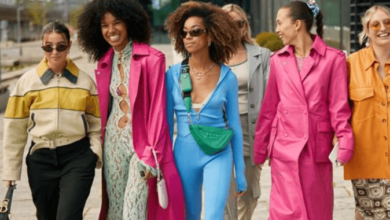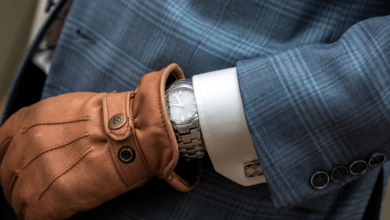
Cultural Fusion in Fashion: Celebrating Diversity Through Design
Introduction
Fashion is a dynamic medium that reflects the evolution of societies, the blending of traditions, and the celebration of global diversity. Cultural fusion in fashion is the art of combining elements from different cultures to create designs that honor heritage while embracing innovation. This creative synergy not only leads to stunning aesthetics but also fosters understanding, appreciation, and unity in a world rich with unique traditions.
The History of Cultural Fusion in Fashion
The history of cultural fusion in fashion can be traced back to ancient trade routes like the Silk Road, where merchants exchanged textiles, patterns, and techniques. Over centuries, these interactions influenced local styles, giving rise to hybrid designs. For example, European aristocracy in the 18th century admired and adopted Chinese silks and patterns, integrating them into Western garments. Today, this fusion has become even more pronounced, driven by globalization and technological advancements.
Storytelling Through Cultural Fusion
One of the most profound impacts of cultural fusion in fashion is its ability to tell stories. A garment can symbolize the merging of different worlds, such as a kimono-inspired jacket made from African Ankara fabric or a dress combining Indian embroidery techniques with contemporary silhouettes. Designers draw inspiration from indigenous textiles, traditional craftsmanship, and cultural motifs, creating pieces that celebrate the heritage of their sources while making them accessible to global audiences. This creative process often involves extensive research and collaboration with artisans to ensure authenticity and respect for the cultures being represented.
The Role of Designers in Cultural Fusion
The role of designers in promoting cultural fusion is pivotal. Many contemporary designers actively seek inspiration from multiple cultures, using their collections to showcase the beauty of diversity. For example, Indian-American designer Naeem Khan incorporates intricate beading techniques from his Indian heritage into glamorous evening wear, which resonates globally. Similarly, brands like Gucci and Dior often feature elements inspired by Asian, African, and Latin American traditions, presenting them through a modern lens. These efforts not only enrich fashion but also challenge conventional notions of style.
Promoting Inclusivity Through Fusion
Cultural fusion in fashion also promotes inclusivity by bringing underrepresented cultures to the forefront. By integrating elements of diverse traditions, fashion bridges cultural gaps and encourages conversations about heritage and identity. For instance, the use of Native American beadwork in contemporary jewelry designs or the adaptation of Middle Eastern abayas into haute couture demonstrates how traditional attire can inspire modern interpretations. Such designs allow individuals to celebrate their heritage while connecting with others who share an appreciation for cultural diversity.
Challenges of Cultural Fusion in Fashion
However, the blending of cultures in fashion is not without challenges. Cultural appropriation, where elements of one culture are used without permission or understanding, has sparked significant debate. The line between appreciation and appropriation can be thin, and designers must navigate this terrain with sensitivity. Collaborating with communities, crediting sources of inspiration, and ensuring fair compensation for artisans are crucial steps in creating ethical and respectful cultural fusion designs.
The Role of Technology in Cultural Fusion
Technology has played a transformative role in cultural fusion, making it easier than ever to explore and incorporate elements from different cultures. Social media platforms, online marketplaces, and digital archives provide access to a vast array of cultural resources. Platforms like Instagram and Pinterest allow designers to connect with artisans worldwide, discover traditional techniques, and find inspiration in global fashion trends. Virtual reality and artificial intelligence are also emerging as tools for blending cultural elements in innovative ways.
Cultural Fusion Beyond Clothing
Cultural fusion in fashion is not limited to clothing. Accessories, jewelry, and footwear also reflect this trend. A single piece of jewelry may combine traditional motifs from several regions, such as a bracelet that incorporates Celtic knots, African beadwork, and Indian filigree. Footwear brands are also embracing cultural diversity, with designs inspired by indigenous patterns and weaving techniques. These products offer consumers a way to express their appreciation for multiple cultures simultaneously.
The Global Impact of Cultural Fusion in Fashion
The global impact of cultural fusion in fashion extends beyond aesthetics. It influences cultural diplomacy, creates economic opportunities for artisans, and fosters a sense of shared identity. Fashion shows and exhibitions celebrating cultural diversity, such as the Met Gala’s “Heavenly Bodies” theme or the International Fashion Showcase, serve as platforms to highlight the significance of cultural exchange. Such events encourage dialogue and understanding, emphasizing the unifying power of fashion.
Educational Efforts in Cultural Fusion
In education, cultural fusion has become a key focus for fashion schools and workshops. Students are taught to explore cross-cultural influences, analyze historical trends, and develop designs that honor their sources. By fostering awareness and encouraging innovation, these programs prepare the next generation of designers to create meaningful and inclusive fashion.
Cultural Fusion and Sustainability
Sustainability is another area where cultural fusion plays an important role. Many traditional crafting techniques align with sustainable practices, such as hand-weaving, natural dyeing, and upcycling. By incorporating these methods into modern fashion, designers not only preserve cultural heritage but also address environmental concerns. This approach highlights how cultural fusion can be both innovative and responsible.
The Future of Cultural Fusion in Fashion
Cultural fusion in fashion continues to evolve, driven by the curiosity and creativity of designers and consumers alike. As the world becomes more interconnected, the possibilities for blending styles, traditions, and techniques are endless. This fusion celebrates the beauty of human diversity, turning garments into symbols of unity and respect.
Conclusion
Fashion serves as a universal language, and cultural fusion adds depth and meaning to that dialogue. It encourages individuals to embrace their heritage, explore new traditions, and appreciate the craftsmanship that connects us all. By celebrating diversity through design, cultural fusion reminds us that while our differences make us unique, they also bring us closer together.




